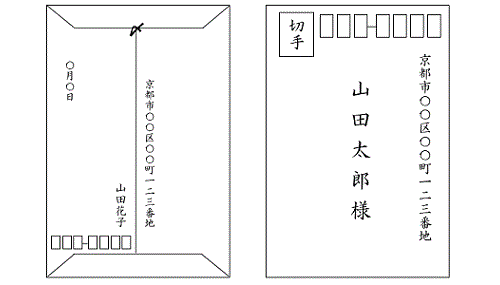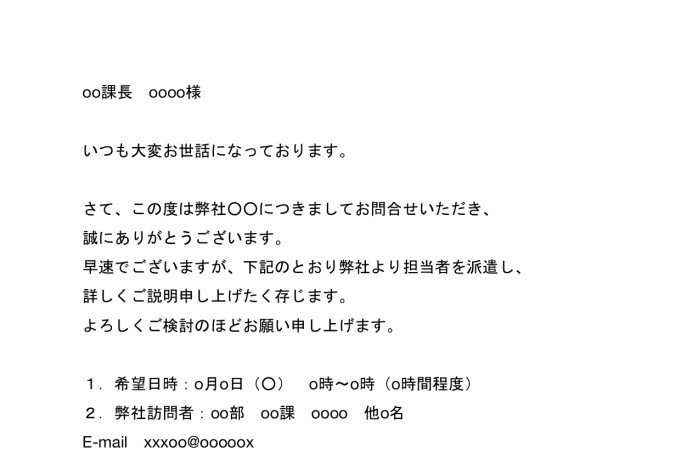
Writing emails and letters in Japanese is an art that goes beyond simply translating words. It involves a deep understanding of politeness levels (Keigo), cultural nuances, and specific structural conventions that are quite different from Western correspondence. Mastering this skill is crucial for professional communication, academic pursuits, and maintaining polite social relationships in Japan.
This guide will break down the essential components and common phrases for crafting effective emails and letters in Japanese.
Before diving into specifics, keep these foundational principles in mind:
To understand the importance of respectful communication in Japan, explore our detailed article on the role of keigo in Japanese society and how it influences workplace and social interactions.
A formal Japanese email or letter generally follows this sequence:
Purpose: Clearly state the content of the email/letter. Include your name or company name if the recipient might not immediately recognize your address.
Format: Concise and informative.
Example:
件名:お問い合わせ(〇〇株式会社・お名前) (Kenmei: O-toiawase (〇〇 Kabushikigaisha・Onamae)) (Subject: Inquiry (XX Co., Ltd. - Your Name))
件名:〇〇の件について (Kenmei: 〇〇 no ken ni tsuite) (Subject: Regarding the matter of XX)

Purpose: Address the recipient politely.
Format:
Company Name + Department Name + Position Title + Name + 様 (Sama)
例: 〇〇株式会社 営業部 部長 〇〇様 (〇〇 Kabushikigaisha Eigyōbu Buchō 〇〇-sama)
(XX Co., Ltd. Sales Department Manager Mr./Ms. XX)
If addressing a company or department generally:
会社名 + 御担当者様 (Go-tantōsha-sama) (Company Name + Person in Charge)
部署名 + 御一同様 (Go-ichidō-sama) (Department Name + To everyone in the department)
Note: Don't use -様 (sama) after a position title alone (e.g., 部長様 is incorrect). It should be 部長 〇〇様.
If you're curious about regional language variations, check out our guide to the different Japanese dialects spoken across Japan—from Osaka-ben to Tohoku-ben.
Purpose: The formal opening greeting that sets the tone. It's paired with a specific closing salutation.
Common Pair:
拝啓 (Haikei): Most common for formal letters/emails. (Paired with 敬具 - Keigu)
Other less common pairs exist for very specific situations (e.g., 謹啓 - Kinkei / 謹白 - Kinbaku for extremely formal).
Purpose: A formal, seasonal greeting, followed by well-wishes for the recipient's well-being or business prosperity. This is a hallmark of formal Japanese correspondence.
Format: Varies by month/season.
Example (July):
盛夏の候、貴社益々ご清栄のこととお慶び申し上げます。 (Seika no kō, kisha ikusukushi go-seiei no koto o o-yorokobi mōshiagemasu.) (In this scorching summer, I sincerely congratulate your company on its continued prosperity.)
Example (general, if unsure of season):
貴社ますますご清栄のこととお慶び申し上げます。 (Kisha masumasu go-seiei no koto to o-yorokobi mōshiagemasu.) (I sincerely congratulate your company on its continued prosperity.)
時下ますますご清栄のこととお慶び申し上げます。 (Jika masumasu go-seiei no koto to o-yorokobi mōshiagemasu.) (I sincerely congratulate your continued prosperity at this time.)
Struggling with spoken fluency? These expert strategies will help you improve Japanese pronunciation fast and sound more natural in daily conversation.
Purpose: Thank the recipient for their past support or apologize for any inconvenience.
Format:
平素は格別のご高配を賜り、厚く御礼申し上げます。 (Heiso wa kakubetsu no go-kōhai o tamawari, atsuku o-rei mōshiagemasu.) (Thank you very much for your continued exceptional patronage.)
先日は誠にありがとうございました。 (Senjitsu wa makoto ni arigatō gozaimashita.) (Thank you very much for the other day.)
ご多忙の折、大変恐縮ではございますが、 (Go-tabō no ori, taihen kyōshuku de wa gozaimasu ga,) (I apologize for intruding on your busy schedule, but...)
Purpose: Clearly state the reason for your email/letter.
Format: Get straight to the point after the preamble. Use clear, concise Japanese.
さて、本日は〜の件でご連絡いたしました。 (Sate, honjitsu wa ~ no ken de go-renraku itashimashita.) (Now, regarding the matter of ~, I am contacting you today.)
つきましては、〜をお願いできれば幸いです。 (Tsukimashite wa, ~ o onegai dekireba saiwaidesu.) (Regarding this, I would be grateful if you could (do) ~.)
〜について、ご質問がございます。 (~ ni tsuite, go-shitsumon ga gozaimasu.) (I have a question regarding ~.)
Purpose: A formal closing phrase wishing the recipient well, or expressing hope for future collaboration/response.
Format:
今後ともどうぞよろしくお願いいたします。 (Kongo tomo dōzo yoroshiku onegai itashimasu.) (We look forward to your continued support.)
ご返信お待ちしております。 (Go-henshin omachi shite orimasu.) (I look forward to your reply.)
お忙しいところ恐縮ですが、ご検討いただけますと幸いです。 (O-isogashii tokoro kyōshuku desu ga, go-kentō itadakemasu to saiwaidesu.) (I apologize for taking up your busy time, but I would be grateful if you could consider it.)
For a full breakdown of correct sounds, intonation, and phonetics, visit our complete Japanese pronunciation guide ideal for learners at any level.
Purpose: The formal closing that pairs with your opening salutation.
Common Pair:
敬具 (Keigu): Paired with 拝啓 (Haikei)
Purpose: Your name and contact information.
Format:
Your Full Name (フルネーム)
Your Company/Organization Name (会社名・団体名)
Your Department (部署名)
Your Contact Information (住所, 電話番号, メールアドレス)
Purpose: The date of correspondence. More common for letters, optional for emails.
Format: YYYY年MM月DD日 (e.g., 2025年7月11日)
New to the language? Start building your vocabulary with this essential list of basic Japanese words for beginners to help you navigate everyday conversations.
Informal communication (friends, family, close colleagues) is much less rigid but still maintains politeness and consideration.
Subject Line: Can be more casual, but still clear.
例: 〇〇元気? (〇〇 Genki? - How are you, XX?)
Greeting:
〇〇へ (〇〇 e): To XX
〇〇さん、元気? (〇〇-san, genki?): Hey XX, how are you?
久しぶり! (Hisashiburi!): Long time no see!
Main Body: More direct, casual language (plain form, less Keigo).
Closing:
じゃまたね (Ja mata ne): See you later!
また連絡するね (Mata renraku suru ne): I'll contact you again!
体に気をつけてね (Karada ni ki o tsukete ne): Take care!
Signature: Just your name.

| Category | Formal | Informal |
|---|---|---|
| Greeting | 拝啓 (Haikei) / (Seasonal greeting), 貴社益々ご清栄のこととお慶び申し上げます。 | 〇〇さん、元気? (〇〇-san, genki?) / 久しぶり! (Hisashiburi!) / お疲れ様です! (Otsukaresama desu!) |
| Opening Line | 平素は格別のご高配を賜り、厚く御礼申し上げます。 / さて、本日は〜の件でご連絡いたしました。 | 元気にしてる? (Genki ni shiteru?) / この間はありがとう! (Kono aida wa arigatō!) |
| Requesting | 〜をお願いできれば幸いです。 (o onegai dekireba saiwaidesu) / 〜いただけますでしょうか。(itadakemasu deshou ka) | 〜してくれる? (shite kureru?) / 〜お願い! (onegai!) |
| Apologizing | 大変申し訳ございません。 (Taihen mōshiwake gozaimasen.) / ご迷惑をおかけし、申し訳ございません。 (Go-meiwaku o okake shi, mōshiwake gozaimasen.) | ごめんね (Gomen ne) / 悪いね (Warui ne) |
| Thanking | 厚く御礼申し上げます。(Atsuku o-rei mōshiagemasu.) / 誠にありがとうございます。(Makoto ni arigatō gozaimasu.) | ありがとう (Arigatō) / 助かったよ (Tasukatta yo - You saved me!) |
| Closing Line | 今後ともどうぞよろしくお願いいたします。(Kongo tomo dōzo yoroshiku onegai itashimasu.) / ご返信お待ちしております。(Go-henshin omachi shite orimasu.) | じゃまたね (Ja mata ne) / また会おうね (Mata aō ne) / 体に気をつけてね (Karada ni ki o tsukete ne) |
| Closing | 敬具 (Keigu) | (No formal closing word) |
Use Templates: Start with a good template for formal emails/letters and fill in your specific content.
Read Examples: Analyze existing Japanese emails and letters to understand the flow and common phrasing.
Get Feedback: If possible, ask a native Japanese speaker or your teacher to review your written correspondence.
Start Simple: Don't try to use overly complex Keigo initially. Focus on getting the structure and basic polite expressions correct.
Writing in Japanese, especially in formal contexts, is a skill that improves with practice and careful observation. By understanding the underlying principles and diligently using the appropriate phrases and structures, you'll be able to communicate effectively and respectfully in any situation.
Business emails in Japan are very formal. Always use Keigo (polite/honorific language) and avoid casual expressions.
Start with お世話になっております (Osewa ni natte orimasu), a polite greeting commonly used in professional settings.
In business emails, emojis are not appropriate. In casual emails, emojis like 😊 and 🎶 are commonly used.
Use 申し訳ございません (Moushiwake gozaimasen) for formal apologies. If it's a smaller mistake, すみません (Sumimasen) is acceptable.
For friends, keep it casual! Use 元気?(Genki?) to ask how they are, and sign off with またね!(Mata ne!) or じゃあね!(Jaa ne!).
In conclusion, mastering the art of writing emails and letters in Japanese is a pivotal step in becoming a more effective and respectful communicator in Japanese society. It goes beyond mere vocabulary and grammar, delving into a deep understanding of politeness levels (Keigo), cultural nuances, and specific structural conventions that are unique to Japanese correspondence.
While the rigid structure and emphasis on formality, particularly in business contexts, might seem daunting at first, consistent practice and attention to detail will make it second nature. By diligently applying the correct opening and closing salutations, incorporating seasonal greetings, and choosing the appropriate level of Keigo for your recipient, you not only convey your message clearly but also show immense respect and consideration.
Embrace the challenge, utilize the templates and phrases provided, and seek feedback whenever possible. Your ability to craft well-written Japanese emails and letters will undoubtedly open doors, strengthen relationships, and enhance your overall proficiency in the language.
Writing emails and letters in Japanese requires understanding the right phrases, level of formality, and structure. Whether you’re sending a business email, a formal letter, or a casual message to a friend, using the correct format will make your writing clear and professional.